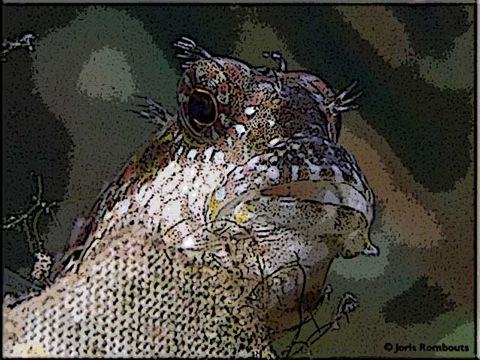- Check the sub-map for the specimen information files -
BLENNYS - BLENNIIDAE
This fish family exists out of a few genera. First we have the Alticus, Entomacrodus and Istiblennius species who inhabit tidal zones and are used to warm water temperatures. There they can jump between tide pools and feed on the vegetation. Then we have the genus Ecsenius, who in general inhabit coral-rich reefs. Blennies often get confused with Gobi's (Gobiidae) because of their similar elongate bodies. Blenniidae (exept the tripplefins) have a single and long continuous dorsal fin. Gobi's don’t! Blennies have a scale-less skin covered with a slime layer. All except for the fangblennies do not have swim bladders and are only able to swim very short distances. They are all bottom dwellers that prefer to inhabit protected rock- and coral reefs. When they are in danger they quickly disappear tail-first into abandon or self-made burrows. Some species are very territorial and protect their area very aggressively. Many of them have branching appendages or Cirri on their heads. Most blennies have numerous tiny comb-like teeth used to feed on algae. It is only the leopard blenny (Exalias brevis) that generally feed on coral polyps while the tire-less and fast swimming fangblennies feed on scales, skin and fin parts which they bite off other fish. Some of them even impersonate other fish to approach unsuspected fish with ease. The most known impersonation is the mimic blenny (Aspidontus taeniatus) which skillfully impersonates the bluestreak cleaner wrasse (Labroides dimidiatus). Members of the genus Meiacanthus have venom glands associated with their teeth. They are avoided by predators because of this defensive adaption and can swim in open water without any danger to feed on planktonic worms and crustaceans. When not feeding, fangblennies rest in worm holes with only their heads exposed. Blennies lay their eggs in small cracks, underneath stones or empty shells which will be guarded by the male or both of them. The larvae stage is very short.
- Check the sub-map for the specimen information files -

